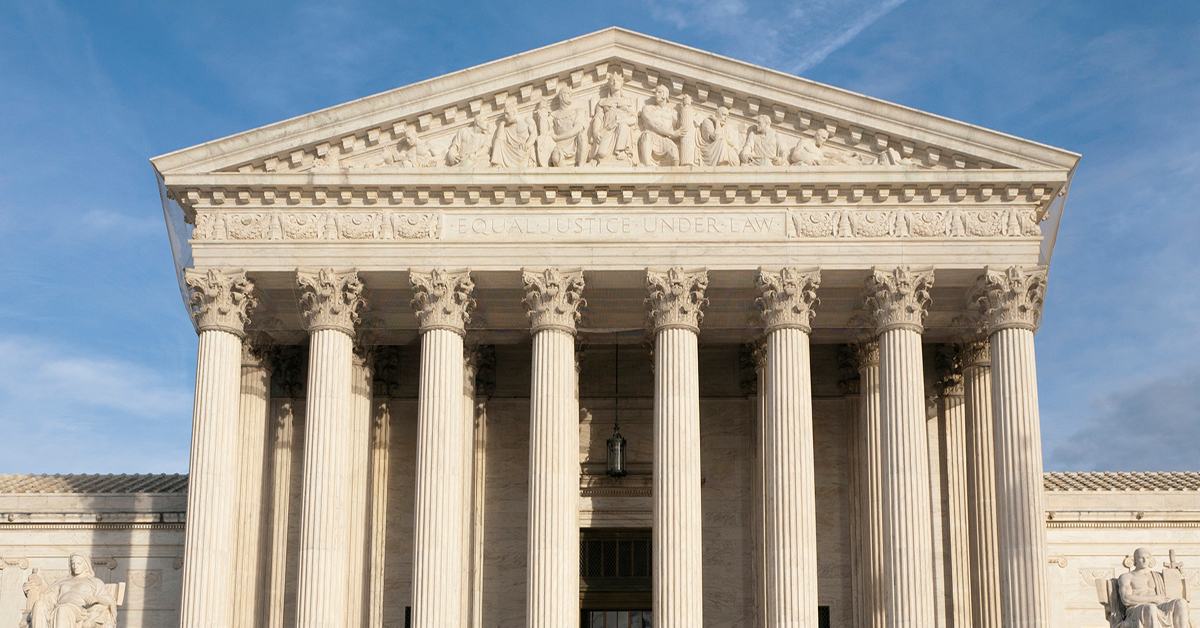
SCOTUS Discusses Attorney Liability in Self-Funded ERISA Cases: A Sneak Peek into the Mindset of the Justices in Montanile v. Board of Trustees of the National Elevator Industry Health Benefit Plan
Last Monday, November 9, 2015, the United States Supreme Court heard oral arguments on whether dissipation of settlement funds would defeat recovery of a purported equitable lien by a self-funded ERISA plan in the matter of Montanile v. Board of Trustees of the National Elevator Industry Health Benefit Plan, No. 14-723. The oral arguments gave some insight into the Justices’ thinking regarding lawyer liability in this setting.
This case will ultimately turn on the Justices’ determination as to when an “equitable lien by agreement” attaches, and therefore whether dissipation of the settlement funds defeats a lien claimed by a self-funded ERISA plan. If the Court determines that the lien attaches immediately, and dissipation does not defeat the lien, lawyers who release the net proceeds to the plaintiff, or retain their own fee, could potentially expose themselves to liability for a claim by the Plan.
While the following excerpts from oral argument are not determinative of the Court’s ultimate decision as to the plan’s recovery rights when an attorney has distributed the net proceeds to the plaintiff and the plaintiff has largely dissipated those funds, they do grant some insight into their analysis. Chief Justice Roberts states:
So the—the beneficiary, even the beneficiary’s counsel gets a letter saying, by the way, we have a lien on this, you know, good luck. I hope you recover a fair amount. But if you do, make sure you put it into a separate account. Make sure you notify us.
And—and if the beneficiary or the lawyer just ignores that, that’s not a basis for fraud?
Oral Argument at 16, Montanile v. Board of Trustees of the National Elevator Industry Health Benefit Plan, No. 14-723 (November 9, 2015).
Then we hear an exchange between Ginger Anders, Esq., Assistant to the Solicitor General, and arguing in support of Montanile, and Justice Breyer:
Justice Breyer: Why can’t—in a case where there’s no time problem—forget the delays and so forth—but like this one, the Plan sue the lawyer? I mean, if there was $500,000 and the lawyer received $200,000—but he certainly received it with notice. It’s not any kind of good-faith purchaser—why can’t they get it back from him?
Ms. Anders: I think they probably could.
Justice Breyer: All right. If they could, then doesn’t that solve the problem for them because lawyers will be awfully careful not to dissipate the funds if, in fact, they’re going to be subject to the lawsuit?
Oral Argument at 22.
These comments are somewhat mitigated by Justice Kennedy’s commentary regarding attorney fee liens and the common fund rule:
Justice Kennedy: I thought in most States, the lawyer has a lien on the fee. His lien is prior—I may be wrong. His—his lien, the lawyer’s lien is prior to the –
Justice Scalia: Yeah.
***
Justice Scalia: I think it must depend on how the agreement reads, and I can’t imagine the agreement wouldn’t—wouldn’t require the beneficiary to turn over the net. Not the gross, but the net recovery, what—what he receives after paying legal fees.
Ms. Anders: Well, I think a lot of these plans are going to disclaim a common fund or—or—you know, they’re going to disclaim their—their—any obligation to have the attorneys’ fees counted against them.
Oral Argument at 24-25.
As a reminder, in April of 2013, the Supreme Court decided US Airways, Inc. v. McCutchen, involving equitable defenses against recovery of a self-funded ERISA plan’s purported lien. In McCutchen, the Justices held:
US Airways, like Mid Atlantic, is seeking to enforce a modern-day equivalent of an “equitable lien by agreement.” And that kind of lien—as its name announces—both arises from and serves to carry out a contract’s provisions. So enforcing the lien means holding the parties to their mutual promises. Conversely, it means declining to apply rules—even if they would be “equitable” in a contract’s absence—at odds with the parties’ expressed commitments…In those circumstances, hewing to the parties’ exchange yields “appropriate” as well as “equitable” relief.
133 S. Ct. 1537, 1546 (U.S. 2013). Therefore, the Court previously ruled that the common fund rule and allowances for attorney fees would be displaced, if explicitly called for in the plan’s contract.
Again, lawyer liability is not a direct issue in Montanile, and may be bypassed completely in their decision.
Further, there is a split in the Circuits as to attorney liability in self-funded ERISA cases. The Sixth and Eighth Circuits have both ruled on the issue. In Longaberger Co. v. Kolt, the underlying personal injury lawsuit settled in July, the attorney for the plaintiff beneficiary notified the plan of the settlement in August, and held the settlement proceeds in his IOLTA pending resolution. 586 F.3d 459, 462 (6th Cir. 2009). In December, the attorney distributed all of the proceeds except for a small amount which remained in his IOLTA. It was not until February that the plan filed suit and named the attorney directly. The attorney’s objection to being named in the suit was dismissed by the Sixth Circuit, which stated that ERISA §502(a)(3) did not prevent the attorney, or any defendant for that matter, from being named. Id. at 468. The court affirmed the District Courts ruling requiring the attorney to reimburse the plan.
By contrast, the Eighth Circuit held that there was no attorney liability in Treasurer v. Goding. In that case, the attorney for the plaintiff beneficiary wrote to the plan during the course of the lawsuit twice. One of the letters stated, “we are not challenging your right to reimbursement/subrogation for payments made for the health care of Sean Goding relating [to] the injuries caused by his fall at the Hilton.” 692 F.3 888, 892 (8th Cir. 2012). The attorney held the portion of the settlement proceeds representing the amount owed to the plan in trust for a month after settlement, before distributing them.
When the plan filed suit against the attorney, the court held, “a subrogation agreement between a client and an ERISA plan is only enforceable against a client’s attorney if the attorney ‘agrees with a client and a plan to honor the plan’s subrogation right’” Id. at 894. Noting further, ‘“[m]ere notice or knowledge of the subrogation agreement or lien does not constitute an implied contract’ between the attorney and the plan.” Id. The Eighth Circuit ruled that the attorney’s letters did not constitute an implied contract, and therefore did not create liability.
In the case currently before the Supreme Court, Montanile’s attorney attempted to negotiate a resolution with the plan for eight months, but reached an impasse and finally distributed the proceeds to Montanile, which gave rise to the instant lawsuit.

